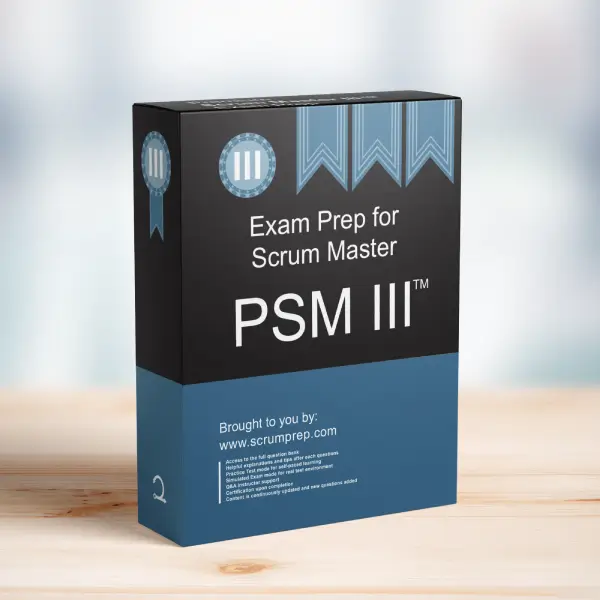Advising the Product Owner on Sprint Concerns
In Scrum, the roles of the Scrum Master, Product Owner, and Developers are distinct but interconnected. The situation where the Product Owner is concerned about the progress of a high-value item late in the Sprint requires careful handling. The Scrum Master’s guidance is crucial in ensuring that the team adheres to Scrum principles while addressing the Product Owner’s concerns.
Exam Question
You are a Scrum Master for a team. Near the end of the Sprint, your Product Owner approaches you with a problem.
She tells you she noticed that the Developers have not begun work on her highest value item yet.
In Sprint Planning, everyone agreed that the item was critical to achieving the Sprint Goal, and the Developers had originally forecast that the work would take almost half of the Sprint to complete.
She is worried it will not get done. She adds that she is surprised by the Developers’ behavior, as they have been consistently delivering done Increments that meet the Sprint Goal.
The Product Owner is considering demanding that the Developers start to work on the high-value item immediately. She asks you for advice as a Scrum Master about what to do.
What advice do you give the Product Owner?
Explanation
Understanding the Situation
In this scenario, the Product Owner is concerned that a critical item has not yet been started, despite being essential for the Sprint Goal. The concern is valid, especially since the item was identified as high value and significant to the Sprint’s success. However, as a Scrum Master, it’s important to guide the Product Owner in understanding the dynamics of the Scrum Team and how to address this situation without disrupting the self-managing nature of the Developers.
Key Points to Consider
- The Role of the Developers in Self-Management: The Developers are self-managing and responsible for deciding how to approach the work during the Sprint. They may have had valid reasons for delaying the start of the high-value item, such as dependencies on other tasks or unforeseen issues that required immediate attention. It’s important to trust their judgment while maintaining open communication.
- Importance of the Sprint Goal: The Sprint Goal is the primary objective of the Sprint. If the high-value item is critical to achieving this goal, then it should indeed be a priority. However, the Developers are likely aware of this and may already have a plan in place to address it before the Sprint ends.
- Avoiding Micromanagement: The Product Owner’s impulse to demand immediate action could undermine the Developers’ autonomy. It’s important to avoid micromanaging the team, as this can erode trust and reduce the team’s ability to self-organize.
Advice for the Product Owner
- Open Communication: Encourage the Product Owner to have an open conversation with the Developers during the Daily Scrum or in a separate meeting. This will allow the Product Owner to express her concerns directly and understand the Developers’ plan for completing the high-value item.
- Trust in the Team: Remind the Product Owner of the Developers’ track record of delivering done Increments that meet the Sprint Goal. This history of success should give her confidence in their ability to manage their work effectively, even if the approach is different from what she expected.
- Focus on the Sprint Goal: Suggest that the Product Owner reiterate the importance of the Sprint Goal and the high-value item, but leave the decision on how to proceed to the Developers. They are best positioned to determine how to organize their work to ensure that the Sprint Goal is met.
- Reflect and Adapt: Recommend that the Product Owner and Scrum Team reflect on this situation during the Sprint Retrospective. This can be an opportunity to discuss the timing of starting critical items and explore any process improvements that could help avoid similar concerns in the future.
Relevance to the PSM III Exam
In the PSM III exam, understanding the nuances of Scrum roles, particularly how a Scrum Master supports both the Product Owner and the Developers, is crucial. This scenario highlights the importance of balancing guidance with respect for the Scrum Team’s autonomy, which is a key aspect of advanced Scrum Mastery.
Key Takeaways
- Developers’ Autonomy: Trust the Developers to manage their work and make decisions on how to achieve the Sprint Goal.
- Open Communication: Encourage dialogue between the Product Owner and Developers to ensure alignment without undermining the team’s self-management.
- Focus on the Sprint Goal: Reinforce the importance of the Sprint Goal while respecting the Developers’ approach to achieving it.
Conclusion
As a Scrum Master, your role is to facilitate collaboration and trust within the Scrum Team while ensuring adherence to Scrum principles. In this scenario, advising the Product Owner to communicate openly with the Developers and trust in their ability to deliver on the Sprint Goal is essential. By doing so, you support the team’s autonomy and help maintain a healthy, productive working environment. For more insights on Scrum Master best practices and preparing for the PSM III exam, visit our Scrum Master PSM III™ Exam Prep.



